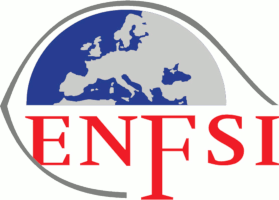STR Nomenclature Guidance
This section provides guidance on the nomenclature of STR alleles generated by (1) capillary electrophoresis (CE) or by (2) sequencing.
1. STR CE Nomenclature Guidance
The following criteria for CE allele nomenclature are applied on STRidER for queries, quality control submissions, and frequency display, where applicable, as originally defined by the ENFSI DNA WG:
- In general, allele nomenclature complies with the guidelines published by the DNA Commission of the International Society of Forensic Sciences 1.
- For STRidER queries and quality control submissions, heterozygous allele calls shall be entered in ascending order, i.e. by using the lower value for the first field of a locus and the higher value for the second field (e.g. 24/25; not 25/24). Homozygous allele values need to be specified twice (e.g. 14/14; not 14). Multiple allele entries (e.g., mixtures, tri-alleles) into one single cell and single empty fields are not accepted.
- For incomplete (or intermediate) alleles, "." instead of "," must be used, e.g., "9.3" not "9,3".
- When the true allele length is known, it should be used for STRidER queries and quality control submissions. Undetermined alleles outside the accepted allele categories can be entered using the „1/99“ nomenclature (e.g. 1/25 or 27/99). Here, „1“ represents an allele outside the accepted allele categories that is shorter, and „99“ represents a longer undetermined allele 2. The allele categories used by STRidER are listed in the table below. Submitted alleles outside these categories will be converted and combined into alleles “1” or “99”, respectively.
- With STRidER release 3 (R3), the nomenclature for locus D6S474 has been updated and follows the specifications outlined in 3.
The following allele ranges are currently used for frequency display and actual matching probability queries, taking the most recent allelic ladders into consideration (last updated with STRidER release 4). Allele ranges for the remaining database loci are under consideration. They will be announced when more data and information are available. To receive updates on the implementation of new loci and allele ranges, register here for the STRidER newsletter.
2. STR Sequence Nomenclature Guidance
The Recommendations of the DNA Commission of the International Society for Forensic Genetics (ISFG) on short tandem repeat sequence nomenclature published in 2024 4 provide guidance on nomenclature, sequence ranges, and related resources. Their implementation is pending, and STRidER will offer sequenced STR allele frequencies upon availability of high-quality datasets in the recommended sequence ranges.
Recommended Resources
The ‘Forensic Sequence STRucture Guide’ (FSSG) is an updated set of forensic STR sequences that was originally published in 5. The original file has been expanded, enhanced and revised as described in the publications 4 and 6. The most recent version of this permanently curated and updated Forensic Sequence STRucture Guide (FSSG) containing updated information is available for download here. The updates since the last version are reported in a change log tab contained in the file. To receive information on new releases of the FSSG and to stay updated about STRidER, register here for the STRidER newsletter.
The STRNaming tool 7 automatically generates allele names according to the ISFG Recommendations 4. Pay attention to the input sequence range; STRNaming also accepts ranges that differ from the recommended ISFG minimum ranges 4.
The STRSeq BioProject is a curated and annotated catalogue of STR allele sequences 8.
References
1 Bär W, Brinkmann B, Budowle B, Carracedo A, Gill P, Lincoln P, Mayr W, Olaisen B (1997) DNA recommendations. Further report of the DNA Commission of the ISFG regarding the use of short tandem repeat systems; Forensic Sci Int 87(3):179-184
2 Vennemann M, Bauer H, Anslinger K, Eckert M, Spitz W, Grethe S, Parson W, Preikschat-Sachse P, The TrACE Team (2026) TrACE - Trace analysis collaborative exercise: A transparent, expert driven concept of proficiency tests; Forensic Sci Int Gen 80:103333 (doi: 10.1016/j.fsigen.2025.103333)
3 Bodner M, Ballard D, Borsuk LA, King JL, Parson W, Phillips C, Gettings KB (2024) Harmonizing the forensic nomenclature for STR loci D6S474 and DYS612; Forensic Sci Int Gen 70:103012
4 Gettings KB, Bodner M, Borsuk LA, King JL, Ballard D, Parson W, Benschop CCG, Børsting C, Budowle B, Butler JM, van der Gaag KJ, Gill P, Gusmão L, Hares DR, Hoogenboom J, Irwin J, Prieto L, Schneider PM, Vennemann M, Phillips C (2024) Recommendations of the DNA Commission of the International Society for Forensic Genetics (ISFG) on short tandem repeat sequence nomenclature; Forensic Sci Int Gen 68: 102946 (doi: 10.1016/j.fsigen.2023.102946; available at http://www.isfg.org/Publication;Gettings2023)
5 Parson W, Ballard D, Budowle B, Butler JM, Gettings KB, Gill P, Gusmão L, Hares DR, Irwin JA, King JL, de Knijff P, Morling N, Prinz M, Schneider PM, Van Neste C, Willuweit S, Phillips C (2016) Massively parallel sequencing of forensic STRs: Considerations of the DNA commission of the International Society for Forensic Genetics (ISFG) on minimal nomenclature requirements; Forensic Sci Int Gen 22:54-63 (doi: 10.1016/j.fsigen.2016.01.009; available at http://www.isfg.org/Publication;Parson2016)
6 Phillips C, Gettings KB, King JL, Ballard D, Bodner M, Borsuk L, Parson W (2018) “The devil’s in the detail”: Release of an expanded, enhanced and dynamically revised forensic STR Sequence Guide; Forensic Sci Int Gen 34:162-169 (doi: 10.1016/j.fsigen.2018.02.017)
7 Hoogenboom J, Weiler N, Busscher L, Struik L, Sijen T, van der Gaag KJ (2022) Advancing FDSTools by integrating STRNaming 1.1.; Forensic Sci Int Genet 61: 102768 (doi.org/10.1016/j.fsigen.2022.102768)
8 Gettings KB, Borsuk LA, Ballard D, Bodner M, Budowle B, Devesse L, King J, Parson W, Phillips C, Vallone PM (2017) STRSeq: A catalog of sequence diversity at human identification Short Tandem Repeat loci; Forensic Sci Int Genet 31:111-117 (doi: 10.1016/j.fsigen.2017.08.017)


